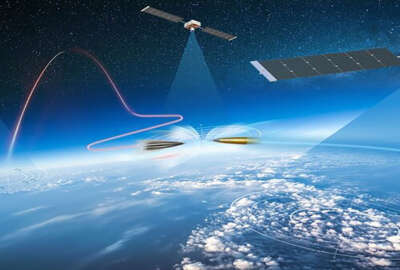Army’s next Project Convergence to be an integrated global exercise
A new iteration of Project Convergence will feature a higher level exercise with international allies.
As the Army begins planning for the next generation Project Convergence, its experimental data and information training program, planners will expand on new technology and lessons learned to take the exercise to a global level. The experiment, due to take place early next year, will be held at the theater level and include other services and as well as allies.
Project Convergence-4 (PC-4) will fine-tune Combined Joint All-Domain Command and Control (CJADC2) to make it more effective in battlefield scenarios. CJADC2 is DoD’s concept for connecting each of its battlefield sensors in an interoperable framework. The last Project Convergence took place in October of 2022. Since then, the Army has run a series of exercises designed to coordinate data collection, communication and decision-making.
“Army Futures Command is rebranding Project Convergence now as more of a capstone event that is going to be the culmination of several exercises that are going on between now and March of next year,” said Army Col. Osvaldo Ortiz, chief of the Army G-3/5/7’s mission command division.
Ortiz, who is responsible for planning CJADC2 strategies, said the agenda for PC-4 will not be set until the Army finishes analyzing the results of the last version of the exercise. PC-4 will also incorporate knowledge gained from other training ventures over the last year and a half. Ortiz said the 2022 exercise had eight objectives, but the objectives are still being developed for PC-4. He said Scarlet Dragon, an artificial intelligence and data training program run by 18th Airborne Corps at Fort Liberty, is one of the exercises that will shape PC-4.
“All those exercises are going to inform what the Army Futures Command is going to get after at [PC-4] capstone for the list of objectives still being developed,” Ortiz told Federal News Network at ATARC’s CJADC2 industry day on Tuesday.
One change in the works for next year’s exercise is an increase in scale. Where it was previously conducted at a tactical level with platoons, companies and battalions, the 2024 version will be held at a theater level with full divisions and a focus on global military integration for command and control.
“What we try to do is based on the lessons learned from PC-22 — data management, how to employ sensors, bringing in coalition partners, that’s going to be an important part of what we’re going to get after in PC-4,” Ortiz said.
One top priority moving forward involves data processing. Ortiz says while the Army collects more than enough data, it needs to do a better job of converting that data into useful information.
“One of our critical lessons learned is asking how we turn information or data into actionable information for commanders or soldiers at the edge to do something with that information. That’s part of our biggest challenge right now,” Ortiz said.
How the data evolves into command and control information is still a work in progress for the Defense Department as a whole. The Pentagon’s vision of CJADC2 continues to evolve and is now more of a global integration question than simply an interservice question. Ortiz said the Army will look for guidance from DoD on how to move forward with CJADC2 development in terms of emerging technology and global use.
“I think we’re leaning on [the Office of the Secretary of Defense] to help us build that definition that by necessity is still an information exchange, how do we create a data mesh that enables the exchange of information not only within the Army but within the services? I think for us, part of the CJADC2 challenge is information exchanging,” Ortiz said.
Copyright © 2024 Federal News Network. All rights reserved. This website is not intended for users located within the European Economic Area.
Alexandra Lohr, a former staff member, covered the Defense Department for Federal News Network until September 2023.






